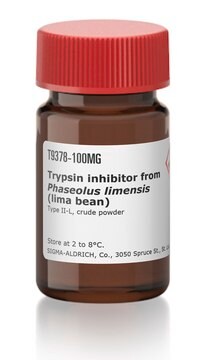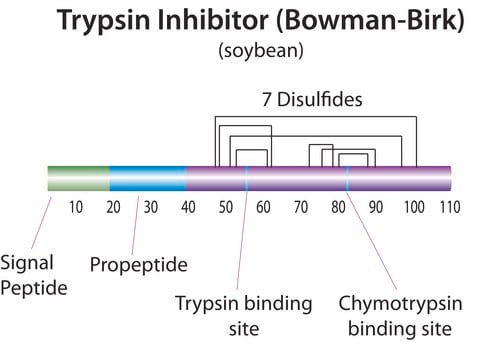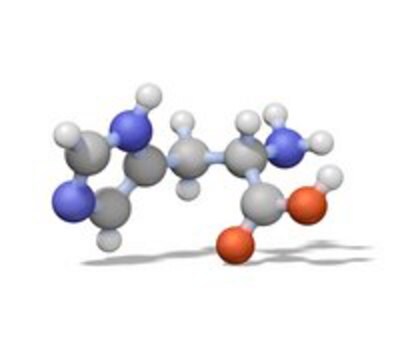T1021
Trypsin inhibitor
powder, suitable for isoelectric focusing (IEF)
Synonym(s):
SBTI
About This Item
Recommended Products
product name
Trypsin inhibitor from Glycine max (soybean), Isoelectric focusing marker, pI 4.6
biological source
Glycine max (soybean)
Quality Level
form
powder
mol wt
20,100 Da
technique(s)
isoelectric focusing (IEF): suitable
pI
4.6
solubility
balanced salt solution: 1 mg/mL
concentrate: >10 mg/mL, hazy, amber-yellow
phosphate buffer: 10 mg/mL
water: 10 mg/mL
serum-free medium: soluble
shipped in
ambient
storage temp.
−20°C
Looking for similar products? Visit Product Comparison Guide
Biochem/physiol Actions
Components
Unit Definition
Preparation Note
Solutions can retain activity when stored short-term at 2-8° C. Solutions are stable in frozen aliquots at -20°C.
Application
related product
Certificates of Analysis (COA)
Search for Certificates of Analysis (COA) by entering the products Lot/Batch Number. Lot and Batch Numbers can be found on a product’s label following the words ‘Lot’ or ‘Batch’.
Already Own This Product?
Find documentation for the products that you have recently purchased in the Document Library.
Customers Also Viewed
Protocols
Natural trypsin inhibitors (serpins) regulate protein activation and catabolism by inhibiting serine proteases in vivo.
Chromatograms
application for HPLCOur team of scientists has experience in all areas of research including Life Science, Material Science, Chemical Synthesis, Chromatography, Analytical and many others.
Contact Technical Service









